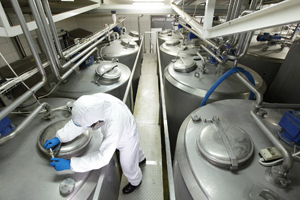New Decision Tree
In our previous article we noted that it was somewhat disappointing the “CODEX” Decision Tree had been removed and no alternative offered although Codex HACCP 2020 still makes reference to using a decision tree or other approach to identify critical control points (CCPs) in Chapter Two Hazard Analysis and Critical Control Point (HACCP) System and Guidelines for its Application, Section 3: Application, 3.7 Determine the Critical Control Points (Step 7/ Principle 2)
The good news is that last year the 52nd SESSION OF THE CODEX COMMITTEE ON FOOD HYGIENE agreed on a new decision tree and worksheet to be passed to CAC 45 for adoption. Conclusion from the Report 52. CCFH52 agreed to forward:
- the “Tools to determine the critical control points (CCPs)” to CAC45 for adoption at Step 5/8 and subsequent inclusion as Annex 2 in the General Principles of Food Hygiene (CXC 1- 1969) (Appendix III, part A); and
- the consequential amendment to Section 3.7 of Chapter two of CXC 1-1969 to cross-reference Annex 2 (Appendix III, part B)
In the the 45th Session of the Codex Alimentarius Comission December 2022 the CODEX COMMITTEE ON FOOD HYGIENE (CCFH) (Agenda Item 4.3) was approved for final adoption.
- CAC45 adopted the:
- Guidelines for the Management of Biological Foodborne Outbreaks) at Step 8; and
- Revision to the General Principles of Food Hygiene (CXC 1-1969).
- 55. The Chairperson noted that with the adoption of the decision-tree, Codex had now completed a major revision of the General Principles of Food Hygiene (CXG 1-1969). Recalling that this was the foundational text for many of the Codex food hygiene texts and was also extensively cross-referenced in other Codex texts, it was now necessary to ensure that, where relevant, Codex texts were fully aligned with the latest version of the General Principles on Food Hygiene (CXG 1-1969).
Changes to the seven principles of the Hazard Analysis and Critical Control Point (HACCP) system in CODEX Recommended International Code of Practice General Principles of Food Hygiene 2020 Edition are highlighted in the image below.
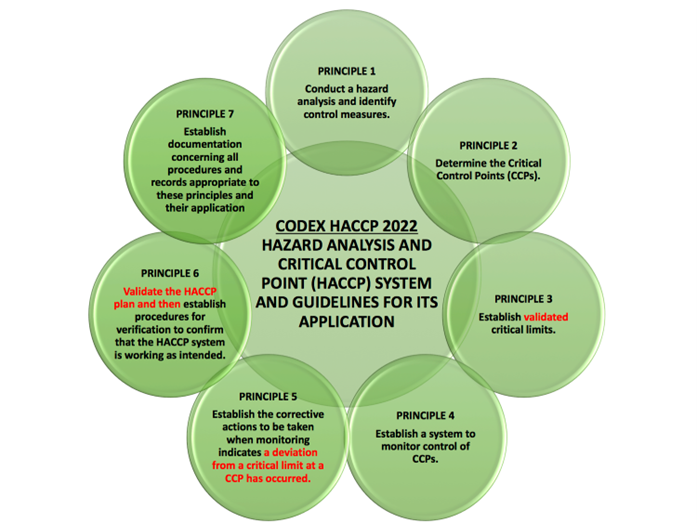
We now expect a revised version of the CODEX General Principles of Food Hygiene to be published shortly. The Decision Tree is used to assist in PRINCIPLE 2 – Determine the Critical Control Points (CCPs). At this stage, we consider which among the available control measures listed during step 6, Principle 1 should be applied at a CCP. Critical Control points are to be determined only for hazards identified as significant as of the result of a hazard analysis.
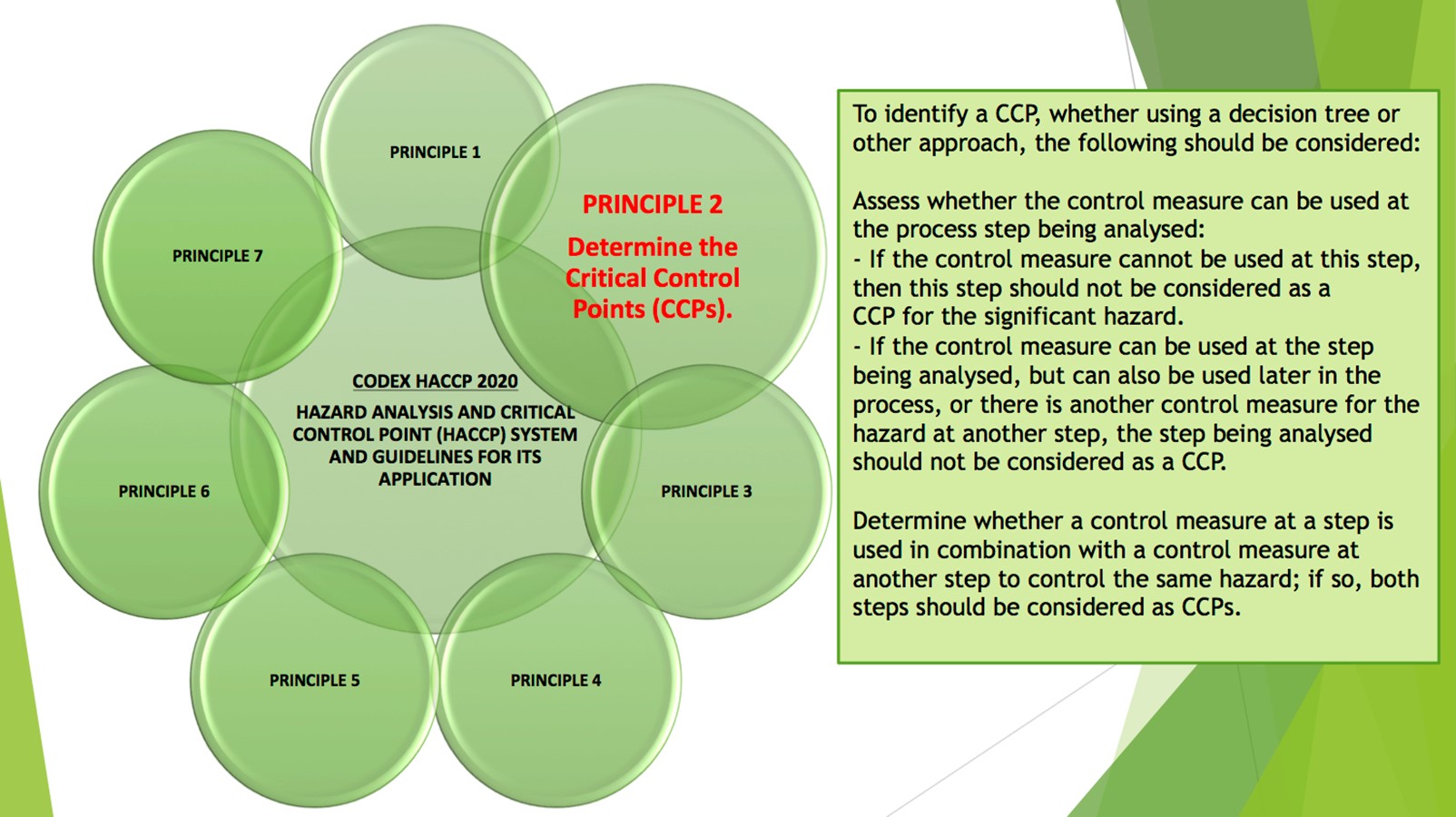
New CCP Decision Tree – Apply to each step where a specified significant hazard is identified
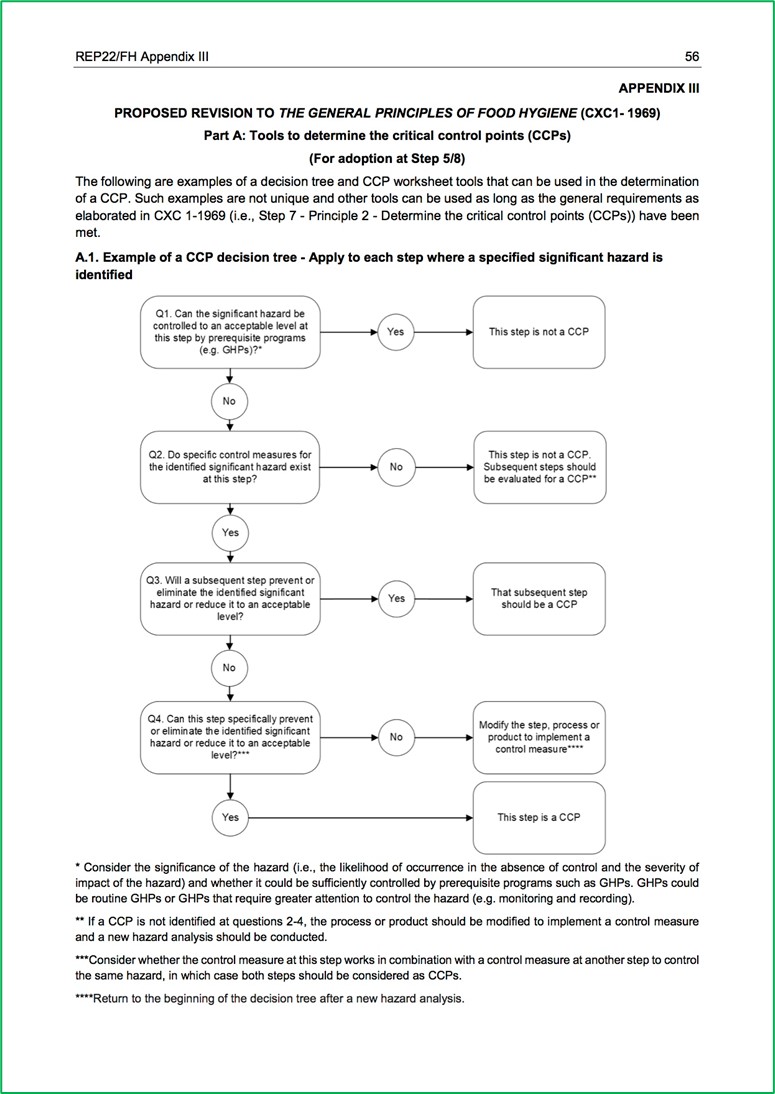
Q1. Can the significant hazard be controlled to an acceptable level at this step by prerequisite programs (e.g. GHPs)*
Yes > This step is not a CCP.
No > Go to Q2
Q2. Do specific control measures for an identified significant hazard exist at this step?
No > This step is not a CCP.
Yes > Go to Q3
Q3. Will a subsequent step prevent or eliminate the identified significant hazard or reduce it to an acceptable level?
Yes > That subsequent step should be a CCP.
No > Go to Q4
Q4. Can this step specifically prevent or eliminate the identified significant hazard or reduce it to an acceptable level? ***
No > Modify the step, process or product to implement a control measure ****
Yes > This step is a Critical Control Point (CCP)
* Consider the significance of the hazard (i.e., the likelihood of occurrence in the absence of control and the severity of impact of the hazard) and whether it could be sufficiently controlled by prerequisite programs such as GHPs. GHPs could be routine GHPs or GHPs that require greater attention to control the hazard (e.g. monitoring and recording).
** If a CCP is not identified at questions 2-4, the process or product should be modified to implement a control measure and a new hazard analysis should be conducted.
***Consider whether the control measure at this step works in combination with a control measure at another step to control the same hazard, in which case both steps should be considered as CCPs.
****Return to the beginning of the decision tree after a new hazard analysis.
Alternatively, the new CODEX Recommended International Code of Practice General Principles of Food Hygiene will include a CCP Determination Worksheet that can be used instead of the Decision Tree. The CCP Determination Worksheet will be as per the draft provided in the 52nd SESSION OF THE CODEX COMMITTEE ON FOOD HYGIENE.
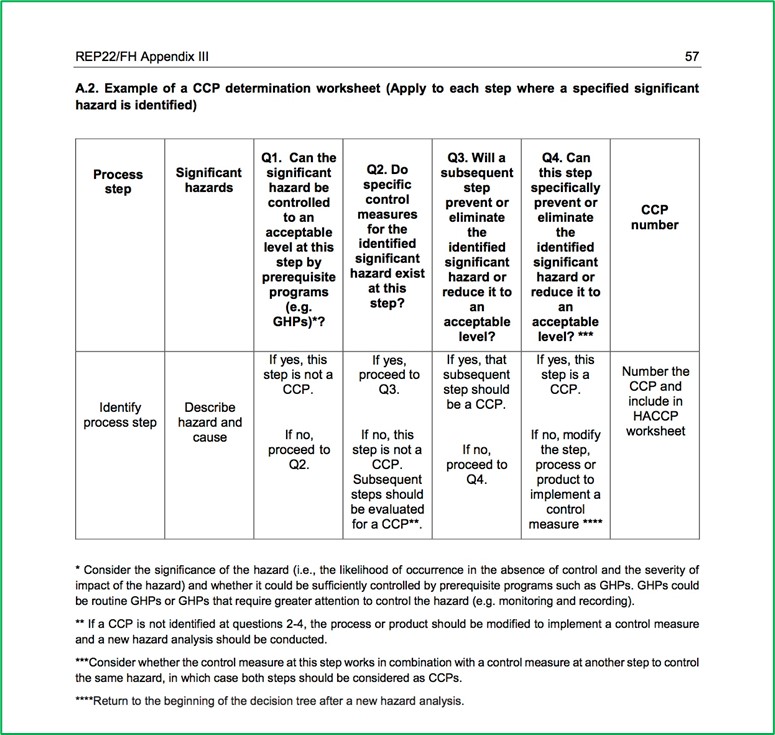
This is a revised version of the Diagram 2 – Example of Hazard Analysis Worksheet provided in CODEX Recommended International Code of Practice General Principles of Food Hygiene 2020
How the Decision Tree Works
Let’s look at a scenario where a process includes sorting because rocks/stones have been deemed to be significant hazard in the raw material. However, the final product is subject to x-ray inspection after the product is packed. Rocks/Stones would be a significant hazard to the consumer if included with the final product.
Running through the decision tree questions:
Question 1: Can the significant hazard be controlled to an acceptable level at this step by prerequisite programs (e.g. GHPs)?
No – go to Question 2
Question 2: Do specific control measures for an identified significant hazard exist at this step?
Yes – Go to Question 3
Question 3: Will a subsequent step prevent or eliminate the identified significant hazard or reduce it to an acceptable level?
Yes – That subsequent step should be a Critical Control Point.

X-ray inspection should be a Critical Control Point, it is the last step in the process where the hazard is removed.
Sorting is implemented as a prerequisite programme to assist in reducing the hazard and also prevention of damage to product, plant and equipment by the rocks/stones.

